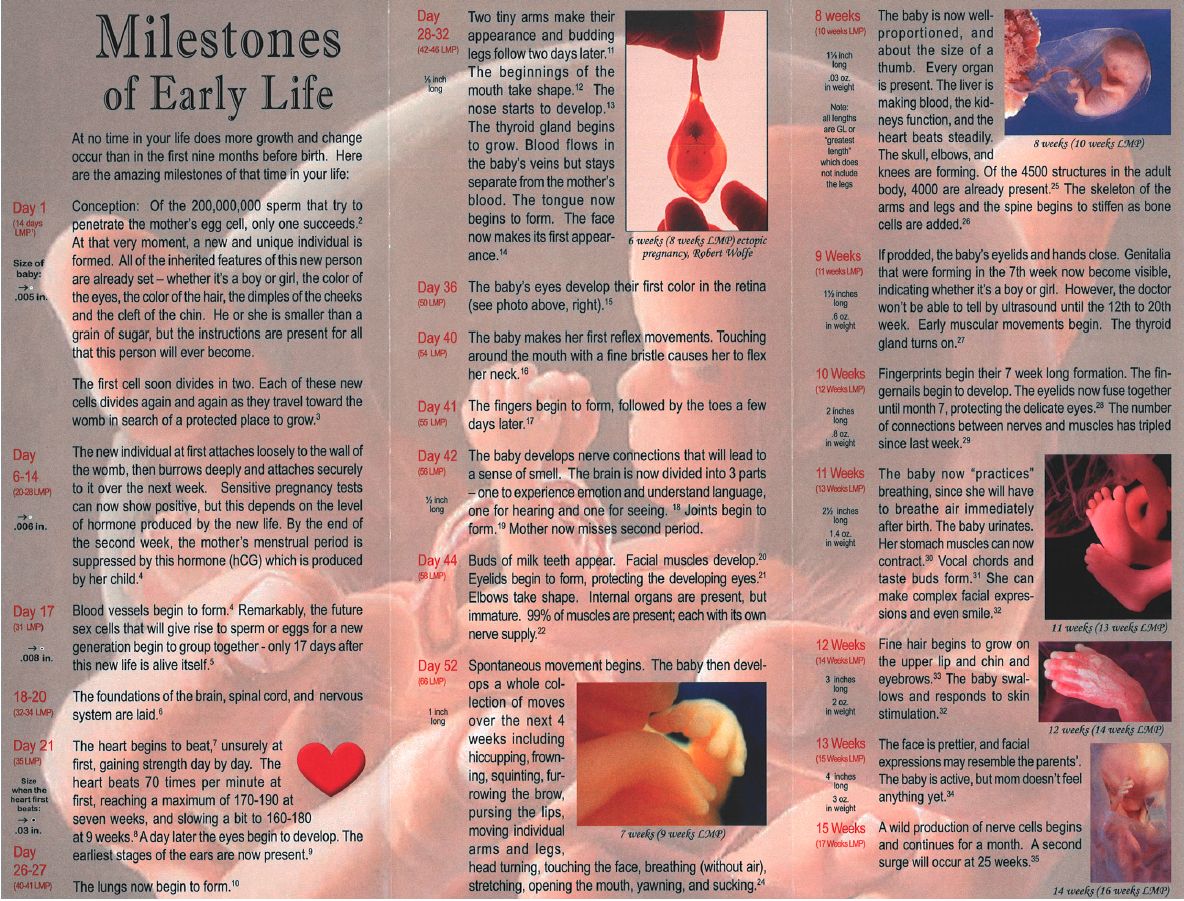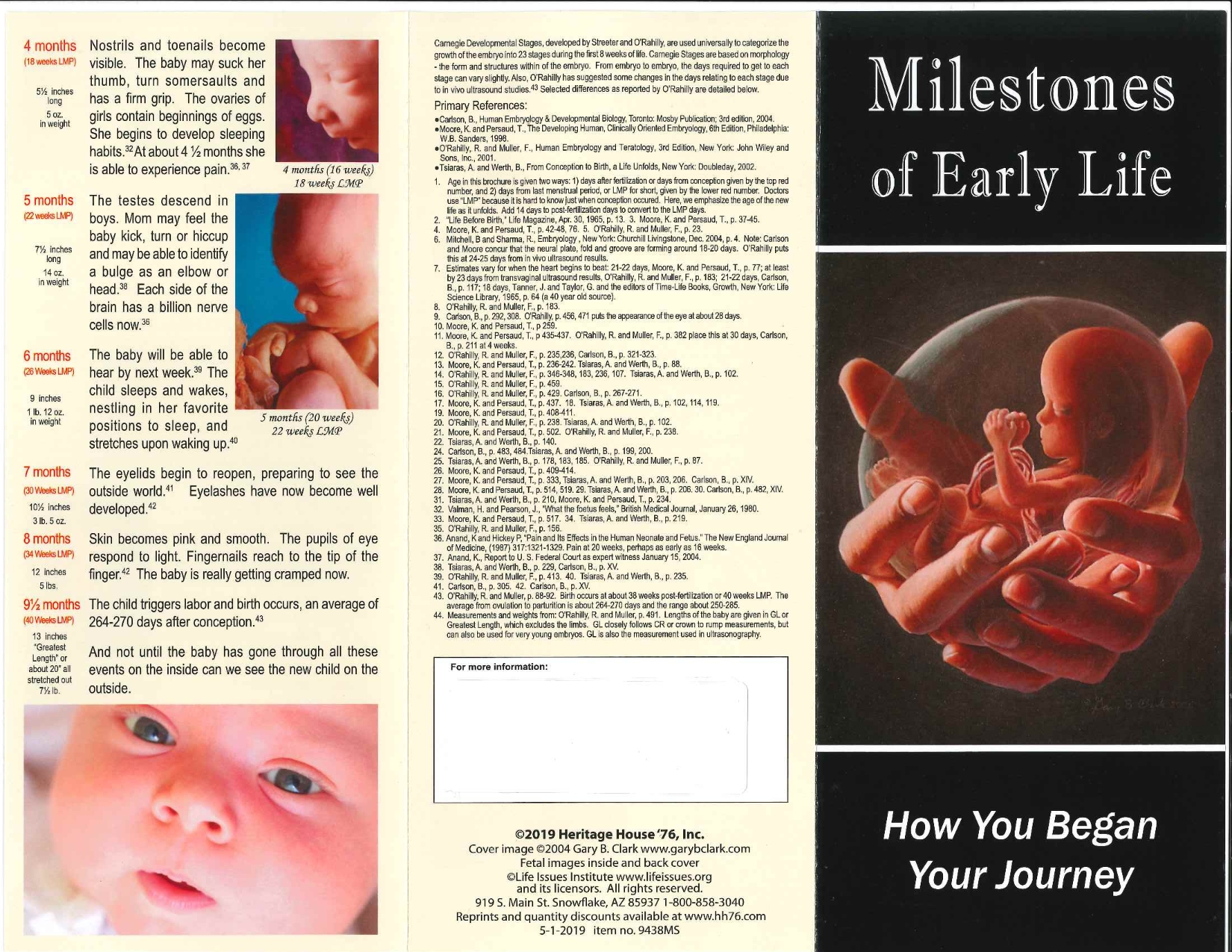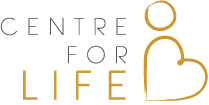During pregnancy, a woman’s body goes through many changes. Some common symptoms of early pregnancy include a missed period, nausea, breast tenderness, frequent urination, tiredness and mood swings.

Most pregnancy tests are very reliable. However, to confirm a pregnancy, a woman should visit an appropriate health care professional. A woman’s doctor may request an ultrasound exam to confirm the status of her pregnancy.
Day 1
At the moment of conception, all of the personal characteristics for human development such as temperament, sex, hair and eye colour are determined. All that is needed is nutrients and time to grow.
Day 18-20
The foundations of the brain, spinal cord and nervous system
are laid.
Day 21
The heart begins to beat. It is usually around this time
that a woman confirms her pregnancy.
5 Weeks
(7 weeks from first day of the Last Menstrual Period)
The umbilical cord develops which will be the embryo’s lifeline in utero. It bears the responsibility of pumping in oxygen, removing waste and supplying the necessary nutrients while in uterus.
6 Weeks
9 Weeks
The embryo has entered the fetal stage of development and will curve fingers around an object placed in the palm of its hand.
10 Weeks
The most critical part of organ development is complete. The fetus is now headed into a period of rapid growth.
12 Weeks
14 Weeks
The skin of the fetus is still very transparent. Lanugo (very fine hair) covers the body. Generally, this will be shed prior to birth.
20 Weeks
The fetus may startle in reaction to loud sounds and can actually hear noises outside of the womb. Familiar voices, music and sounds that the fetus becomes used to during development stages are often calming after birth.
23 Weeks
With the fetus’s sense of movement now well developed, the mother can sway to music and the fetus will be able to feel the dancing motion. At this stage, fetus’s are considered viable, that is, they can survive outside the womb with appropriate medical intervention
26 Weeks
Although the fetus’s eyes been sealed shut for the last few months, they are now fetus’s eyes are opening and beginning to blink. Fetal brain scans show a response to touch. If a light is shone on the mother’s abdomen, the fetus will turn its head, which means the optic nerve is working.
32 Weeks
It may be noted that the fetus is not moving around as much because there is just not enough room. Besides growing, the fetus is busy dreaming. Brain scans have shown that fetuses have periods of dream sleep (REM) starting around the eighth month.
35 Weeks
From this point onwards, the fetus is no longer considered premature and is patiently awaiting its entrance into the world.
If you would like to learn more about fetal development, there are many great websites that will provide you with detailed information and imaging. The websites below have valuable information on pre-natal development, pregnancy and birthing:
- http://www.ehd.org
- https://www.justthefacts.org/
- https://www.babycenter.com/
- See Baby Pregnancy Guide: Android Apps on Google Play – https://play.google.com/store/apps/details?id=org.ehd.pregnancycalendar&hl=en
Brochure below used with permission of: www.hh76.com


